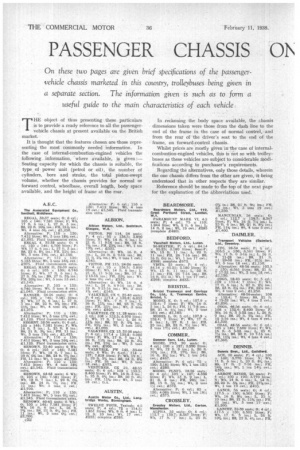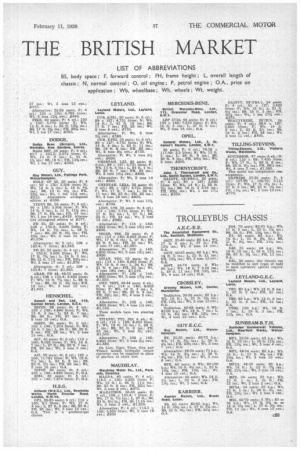PASSENGER CHASSIS ON THE BRITISH MARKET
Page 102

Page 103

If you've noticed an error in this article please click here to report it so we can fix it.
On these two pages are given brief specifications of the passengervehicle chassis marketed in this country, trolleybuses being given in a separate section. The information given is such as to form a useful guide to the main characteristics of each vehicle , THE object of thus presenting these particulars is to provide a ready reference to all the passengervehicle chassis at present available on the British market.
It is thought that the features chosen are those representing the most commonly needed information. In the case of internal-combustion-engined vehicles the following information, ' where available, is given :Seating capacity for which the chassis is suitable, the type of power unit (petrol or oil), the number of cylinders, bore and stroke, the total piston-swept volume, whether the chassis provides for normal or forward control, wheelbase, overall length, body space available, and the height of frame at the rear. In reckoning the body space available, the chassis dimensions taken were those from the dash line to the end of the frame in the case of normal control,. and from the rear of the driver's seat to the end of the frame, on forward-control chassis.
Whilst prices are Mostly given in the case of internalcombustion-engined vehicles, this is not so with trolleybuses as these vehicles are subject to considerable modifications according to purchaser's requirements.
Regarding the alternatives, only those details, wherein the one chassis differs from the other are given, it being understood that in other respects they are similar.
Reference should be made to tie top of the next page for the explanation of the abbreviations used.




























































































































































